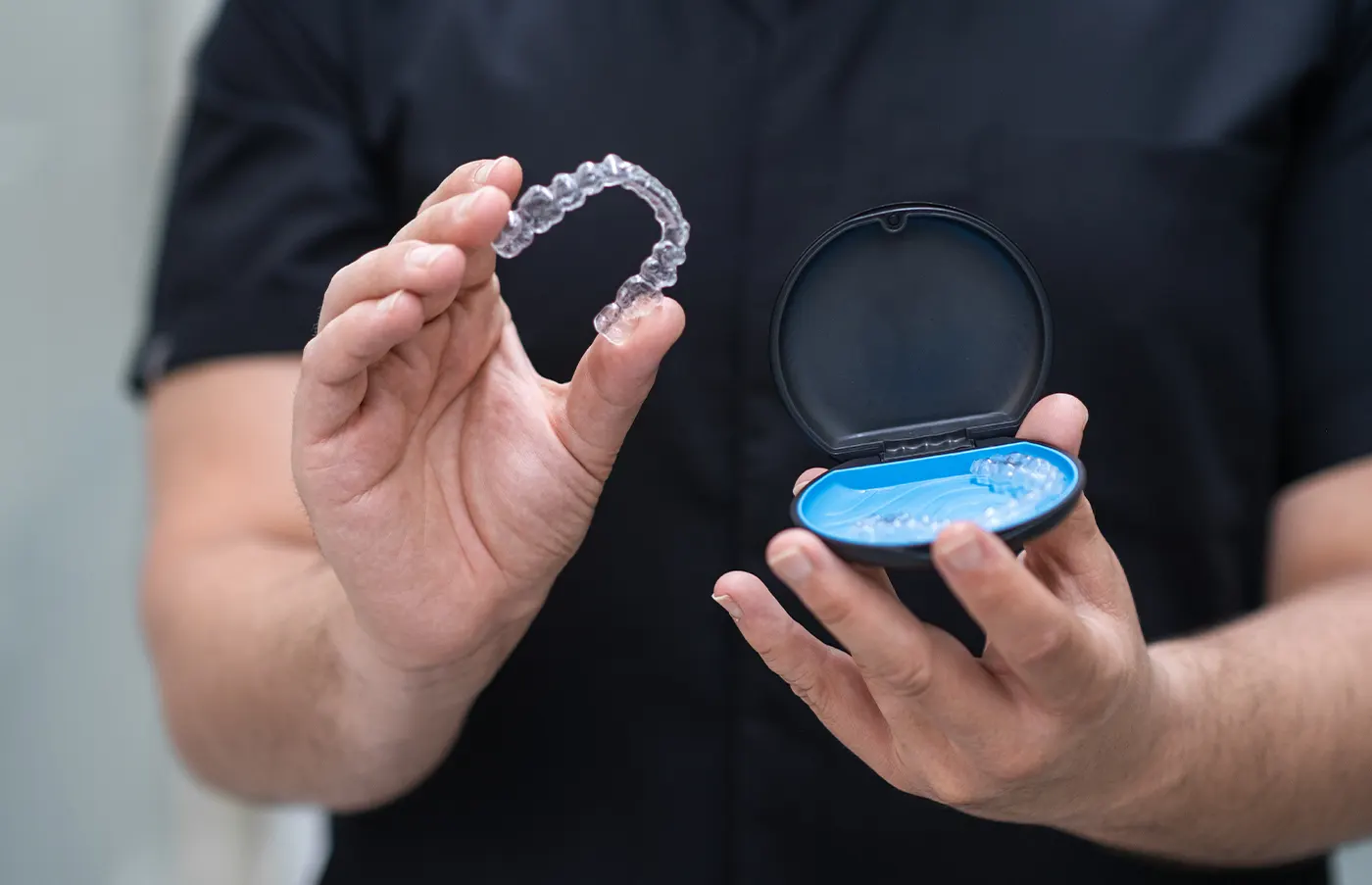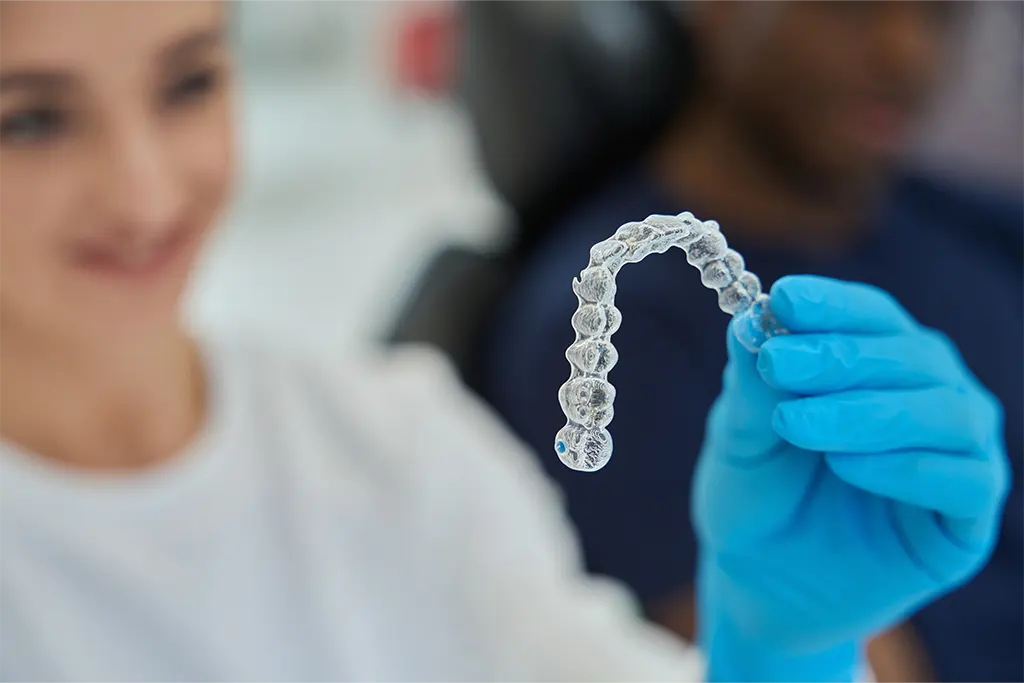You have finally completed your orthodontic treatment, and your braces have been removed. But you learned that your teeth could slowly move back to their original positions without wearing your retainer. Here, we will examine why retainers after braces are so important, the types of retainers available, and how to use them properly to keep your smile in check
Why Do You Need Retainers After Braces?
When your braces are removed, or you finish Invisalign, your teeth may not be entirely stable in their new positions. Orthodontic treatment shifts your teeth by loosening them in their sockets and guiding them to new spots. However, your teeth might move back without something holding your braces or Invisalign treatment in place.
Retainers act as a safeguard, giving the surrounding bone and tissue time to adjust and stabilize. Think of them as insurance for your smile. You’ve invested months or years into achieving straight teeth, so wearing your retainer is essential to maintaining those results.
What Are the Different Types of Retainers?
Retainers come in several forms, each suited to different needs and lifestyles. Here are some retainer options:
1. Removable Retainers
Removable retainers are exactly what they sound like, retainers you can take out. There are two popular types:
Essix Retainer:
- This is a clear, plastic retainer that looks like a slim version of Invisalign aligners. It’s nearly invisible, making it a popular choice for adults. It’s also lightweight and easy to use.
Hawley Retainer:
- This is the classic wire retainer with a sturdy acrylic base that sits on the roof of your mouth. It’s durable and adjustable but more noticeable than the Essix retainer.
Pros:
- Easy to clean.
- It can be removed during meals or brushing.
Cons:
- It is easy to lose if you don’t store it in its case.
2. Fixed Retainers (Permanent Retainers)
A fixed retainer, also known as a permanent retainer, is a small wire bonded to the back of your teeth. It’s commonly used for lower front teeth, where shifting is more likely.
Pros:
- Always in place, so you don’t have to remember to wear it.
- Great for people who tend to forget or don’t wear removable retainers consistently.
Cons:
- It can be challenging to clean around.
- It is not removable, which may be inconvenient for some.
Your orthodontist will help you choose the type of retainer that’s best for your lifestyle and treatment goals.

How Can You Use Retainers Effectively?
Now that you know the types of retainers, let’s get into how to use them to keep your straight teeth looking great.
How Often Should You Wear Your Retainer?
When your braces are removed, you’ll likely need to wear your retainer full-time for the first few months, both day and night. Once your teeth are more stable, your orthodontist may allow you to switch to nighttime wear only. The key is consistency. Don’t wear your retainer sporadically; this increases the risk of your teeth moving out of place.
How Do You Keep Your Retainer Clean?
Proper hygiene is crucial, for both a fixed retainer and a removable one.
- For removable retainers, clean them every day with a soft toothbrush and non-abrasive toothpaste. Avoid hot water, as it can warp plastic retainers like the Essix retainer.
- For fixed retainers, flossing can be tricky. Use floss threaders or a water flosser to clean between your teeth and the retainer wire.
What Should You Do If Your Retainer Feels Uncomfortable?
It’s normal for a retainer to feel a bit tight when you first start wearing it or after a break. However, if it causes pain or doesn’t fit properly, contact your orthodontist. Don’t try to adjust it yourself, especially with wire retainers like the Hawley retainer.
Why Is Consistency Key?
Wearing your retainer regularly is the only way to ensure your teeth stay in their new positions. If you skip wearing it for a while, your teeth may shift enough that the retainer no longer fits. At that point, you might need a new retainer or even more orthodontic treatment.
What Happens If You Don’t Wear Your Retainer?
To put it simply, if you don’t wear your retainer, your teeth will move. This process is called relapse, and it can undo all the hard work and money you put into braces or Invisalign.
Teeth are particularly prone to shifting in the first year after your braces are removed, so this is when wearing your retainer is most critical. Over time, even small shifts can lead to alignment issues, crowding, or gaps that require additional treatment to fix.
Protect Your Treatment
Retainers after braces are an essential part of keeping your smile straight and healthy. If you end up with a removable retainer like the Essix or Hawley retainer or a fixed retainer, the key to success is wearing it consistently and keeping it clean.
Remember, orthodontic treatment doesn’t end when your braces are removed. By following your orthodontist’s advice and making your retainer a regular part of your routine, you can ensure that your straight teeth stay that way.
Need support with your retainer or orthodontic treatment? Contact us now for expert advice.

